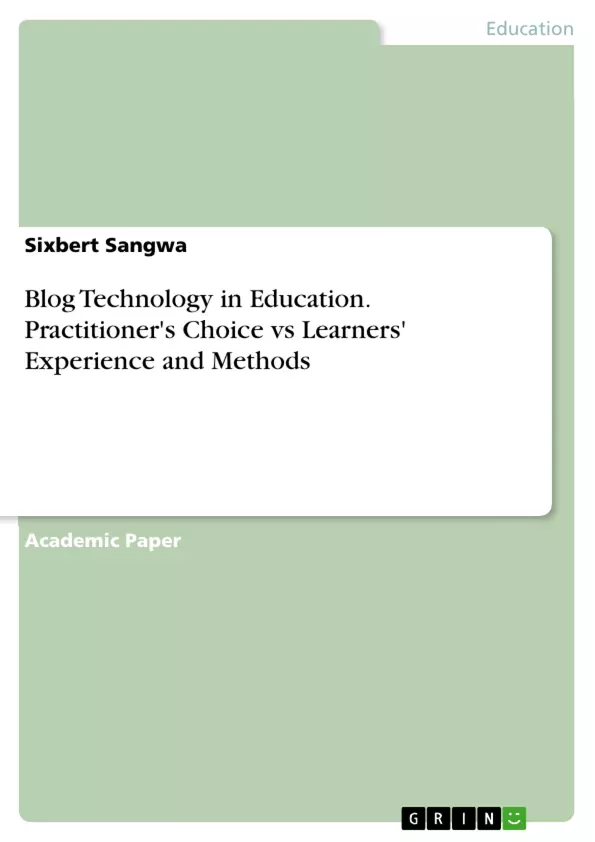This paper presents the critical reflection on technology-assisted learning. It is based on the choices practitioners make about how to apply technologies to their learners and the choices learners make about their own learning, in terms of what technologies they use, why and how. Based on three main learning activities: blog and blogging, Reading Price (2007) and, the learner experience; reflection uses concrete example to explain what allows the author to understand the choices, experiences and methods of practitioners and learners in the application of technologies to education.
A brief takeaway from the discussions is that learners and practitioners have different choices in specialized technologies. Learner’s experience is grounded on four major things: familiarity with technology, students’ perceptions, Students expectations and efficacy and effectiveness ensures teachers realize their intentions of their course design, relative to the use of technology (approach). Based on these, recommendations were made on how courses and learning activities could be better developed.
Inhaltsverzeichnis (Table of Contents)
- Choice of Activities
- Blog and Blogging
- Understanding choices for practitioners and learners
- Reading Price et al. (2007)
- The learner experience
- Understanding Choices for Practitioners & Learners
- Discussions
- Redesigning the Activity
- Suggestions on the design of blog activity
- Methods
- Learner Experience and Methods
Zielsetzung und Themenschwerpunkte (Objectives and Key Themes)
This paper critically reflects on technology-assisted learning, analyzing the choices practitioners and learners make when applying technologies to education. It explores the use of technology in terms of choice, experience, and methods, using concrete examples to illustrate these concepts. The paper examines the different perspectives of practitioners and learners on blog usage in online learning.
- The impact of web 2.0 technologies on online learning
- The role of blogs in facilitating collaboration and interaction
- The influence of student perceptions and expectations on technology use
- The effectiveness of technology in achieving learning goals
- The importance of designing learning activities that cater to both practitioners and learners
Zusammenfassung der Kapitel (Chapter Summaries)
- Choice of Activities: This chapter delves into the use of blogs as a web 2.0 technology in online learning, highlighting the contrasting views of practitioners and learners on their effectiveness. The author explores their own experience with blogs, examining the factors that influence their choice to use or avoid this tool, and how they perceive its potential benefits and drawbacks.
- Reading Price et al. (2007): This chapter analyzes a study conducted by Price et al. (2007) that investigated the differences in student perceptions between online and face-to-face tuition. The author discusses the findings of the study, evaluating its strengths and limitations, and how its insights relate to the broader discussion on technology-assisted learning.
- Redesigning the Activity: This chapter explores potential improvements in the design of learning activities that incorporate technology, aiming to create a more effective and engaging experience for both practitioners and learners. It offers practical suggestions based on the insights gained from the previous discussions on blog usage and student perceptions.
Schlüsselwörter (Keywords)
The primary keywords and focus topics include blog as a learning tool, web 2.0 technologies, the Net Generation, online tuition, online course design, and student and teacher perceptions.
- Citar trabajo
- Dr. Sixbert Sangwa (Autor), 2018, Blog Technology in Education. Practitioner's Choice vs Learners' Experience and Methods, Múnich, GRIN Verlag, https://www.grin.com/document/1012721



